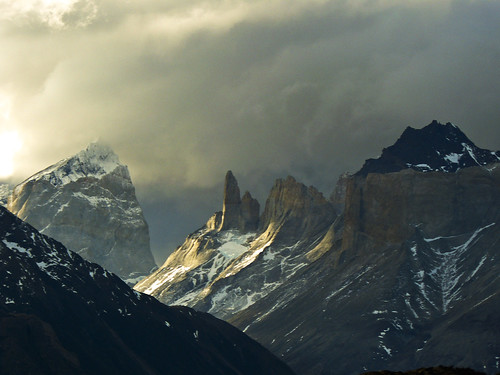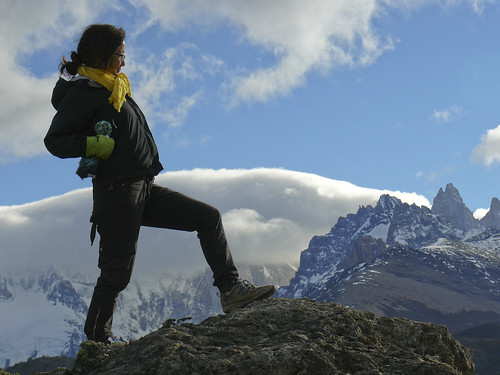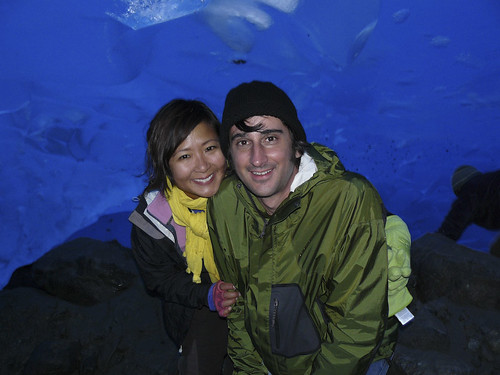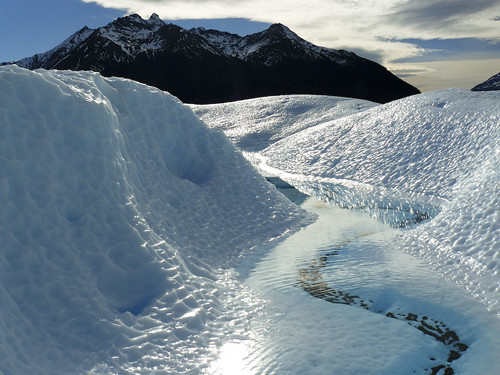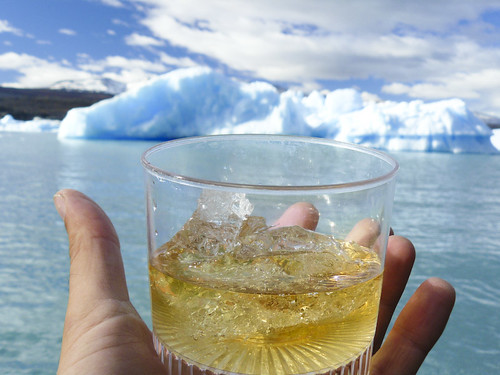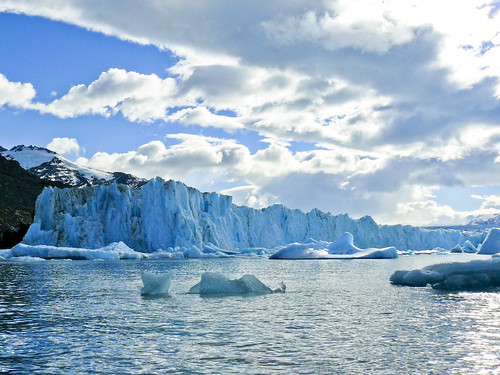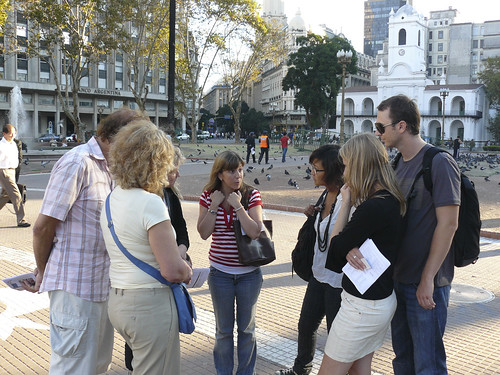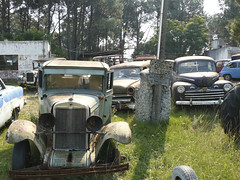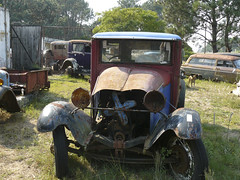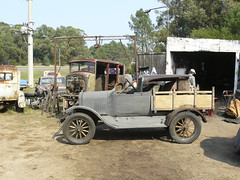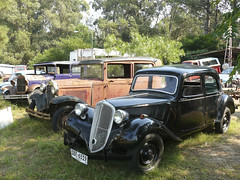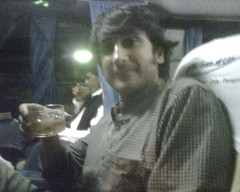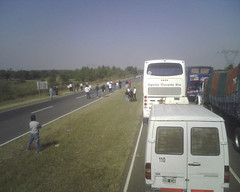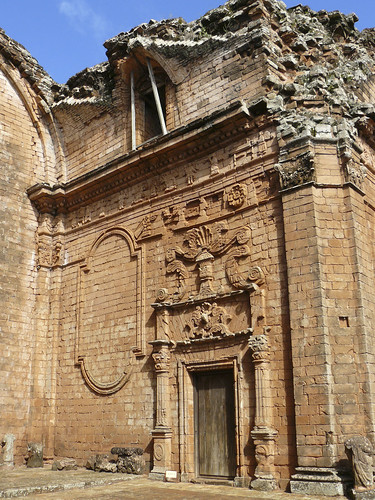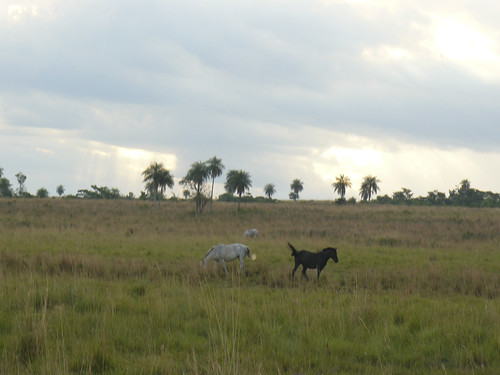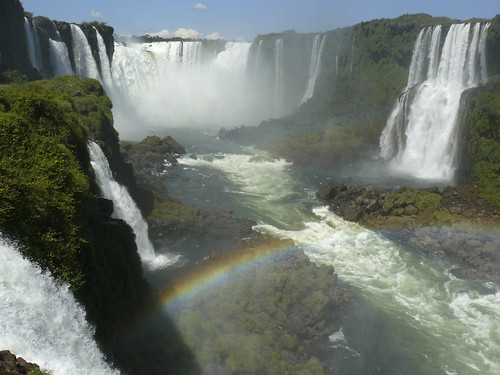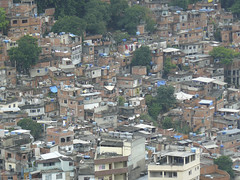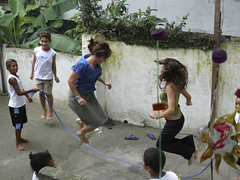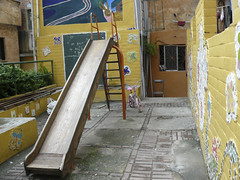Since we were short on time, the following day we spent our day taking an organized tour around the park. The Patagonia region is beautiful, and Torres del Paine has more than it’s fair share of amazing views, teal and turquoise lakes, glaciers and icebergs, the towers of Paine and the horns of Paine. The sights are dramatic and ever-changing. One minute it’s sunny and brilliant, and the next it’s overcast and ominous.
quick tour of Torres del Paine
May 18th, 2008Torres del Paine, Chile
May 13th, 2008Because we sometimes wait until the last minute to figure out where to go next, we sometimes have scheduling problems…wait a minute…that happens almost every other day…only this time it worked in our favor, giving us the opportunity to head to Torres del Paine. We couldn´t find a flight out of El Calafate, so instead we decided to head south into Chile. A few hours later we were in Puerto Natales, a not-so-pretty touristy town that gives you access to Torres del Paine. Our plan was to spend two days in the park, before taking a flight north to Santiago from neighboring city Punto Arenas.
The following morning after arriving into Puerto Natales, we took an early morning shuttle bus that dropped us off at the Laguna Amarga entrance of Torres del Paine. Two days before our arrival marked the “off season” for the park. For us meant that the shuttle buses within the park were no longer running–ie. instead of a shuttle bus, we had to walk 7km to our accomodation. I guess the park rangers figure, you´re there to hike, so what does it matter where you are hiking. And it´s true, walking along the dirt road, we were able to appreciate the beauty of the three ¨towers¨of Paine, all the same.
El Chalten
May 5th, 2008Our next stop in Patagonia was El Chalten, home of the famous Fitzroy mountain range, which seemed perpetually covered with clouds while we were there. It also looks a lot colder in the pictures than it really was, but considering we haven’t been in cold weather in well over a year, it still felt pretty cold to us. Of course that didn’t stop Christine from attempting to climb to the summit
ice box
May 4th, 2008trekking on the Perito Moreno glacier
May 4th, 2008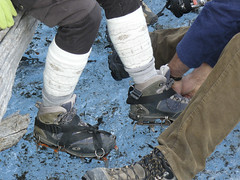 The next morning we set off early for our “Big Ice” trek on the Perito Moreno glacier. The Perito Moreno glacier is only one of three glaciers in Patagonia that is not retreating. Depending on the time of year, the glacier is continually advancing and/or retreating. Occasionally we would hear a loud cracking sound, similar to that of thunder, followed a chunk of ice falling off the glacier, splashing into the water. Quite an amazing experience.
The next morning we set off early for our “Big Ice” trek on the Perito Moreno glacier. The Perito Moreno glacier is only one of three glaciers in Patagonia that is not retreating. Depending on the time of year, the glacier is continually advancing and/or retreating. Occasionally we would hear a loud cracking sound, similar to that of thunder, followed a chunk of ice falling off the glacier, splashing into the water. Quite an amazing experience.
For our trek, we started hiking along the mountainside for an hour alongside the glacier. Before stepping onto the glacier, we had crampons securely fastened to our hiking boots. The trek on the glacier was about 4 hours, and it was one of the highlights of my trip. The crampons ensure a strong grip in the ice even when going uphill or downhill. They made crossing on the glacier surprisingly easy, with the satisfying crunch of ice under-foot.
I thought the boat ride was amazing, but even there you can’t see the details of the glacier…there are streams and pools of water running throughout the glacier, along with cracks and crevasses filled with water. Different objects on the glacier (such as rocks, leaves, branches), absorb the sun at a faster rate, creating a depression (called cryocones), which then creates small natural pools and streams that continue to melt at a faster rate than the glacier. A small pebble might be responsible for 30 foot deep pool.
Mmmmm… Glaciers taste good
May 4th, 2008cruising around the glaciers
May 4th, 2008After a week of taking Spanish classes and eating bife de chorizo in Buenos Aires, we flew south to El Calafate to see the mountains and glaciers of Patagonia. Early the next day, even before sunrise we departed by boat from Bandera Port to explore the nearby glaciers–Upsala (the largest in the region), Spegazzini (with the highest front wall @ 400ft) and Agassiz.
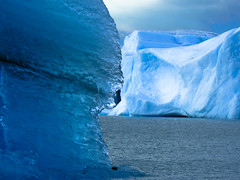 The glaciers in Patagonia are centennial glaciers, existing in the last hundred years, rather than the millennial glaciers of Antarctica (thousands of years old). The glaciers are formed in the Andes mountains–as snow accumulates in the valleys between the mountains, over time the snow becomes compact, forming into ice. The icefields of Patagonia are the source of the world´s third largest freshwater source.
The glaciers in Patagonia are centennial glaciers, existing in the last hundred years, rather than the millennial glaciers of Antarctica (thousands of years old). The glaciers are formed in the Andes mountains–as snow accumulates in the valleys between the mountains, over time the snow becomes compact, forming into ice. The icefields of Patagonia are the source of the world´s third largest freshwater source.
By boat, we were pretty close to the glaciers and icebergs, able to see clearly the beautiful shades of blue reflecting off the sun along with the different textures of each glacier. It was spectacular. At one point the crew, pulled out a chunk of ice floating in the water so we could drink our Nacional whiskey with fresh glacier ice.
House of Peña
April 26th, 2008People in Argentina don’t sleep. Restaurants don’t even open their doors until 8PM, and even then most people don’t go out to eat until 10. Going to bed on a full stomach isn’t healthy, so luckily clubs don’t get busy until 2 or 3 and go until the morning. Needless to say, this lifestyle didn’t quite fit into our schedule of getting up for our 9AM Spanish class. Since our class ended on Fri. we decided to sample some Argentinian nightlife. After the obligatory 11PM steak, we went to Peña Los Cardones. Peñas are grass-roots get-togethers showcasing popular folklore – which usually means locals meeting up for traditional-style dancing and music over drinks. In German beer hall fashion, wooden tables dominate the floor space accommodating the lively crowd taking in a hearty share of live folk music and Quilmes brew (the domestic beer in Bs As). The performance part of the evening lasts until 2AM, culminating in a big sing along on stage.
[youtube]http://www.youtube.com/watch?v=hO5mFMHQqKQ[/youtube]
Then each table has a guitar and a songbook and everyone spends the rest of the night singing traditional folk songs
[youtube]http://www.youtube.com/watch?v=EJp0Ky3GccA[/youtube]
Spanglish
April 25th, 2008Since my last extended period of being in a Spanish speaking country didn’t produce much results, we decided to enroll in a few Spanish classes during our week in Buenos Aires. The morning class was more traditional, in a classroom setting and the afternoon class was a combination, tour/language class where we went around the city to different areas and learned some practical Spanish. We had to go to the bus station, the supermarket and restaurants and try to practice what we learned. It was pretty fun and an interesting way to see the city. Unfortunately Argentinian Spanish is a bit odd so it’s kind of like being taught to have a speech impediment to the rest of the Spanish speaking world, but at least I can now ask where the bathroom is.
Ojo de bife
April 25th, 2008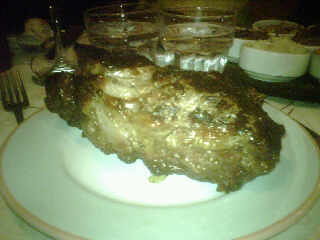
Argentina is known for its delicious beef, and by looking at this photo how could you have any doubts?? If you can believe, this is the rib eye steak Mike ordered at La Cabrera in Buenos Aires. My guess is that it was 2 pounds of beef, maybe more. It was big enough to measure in terms of volume/cubic inches– that’s how thick and crazy big it was. My order of the bife de chorizo (the rump steak) was also a giant serving and tasted even better than the ribeye.
If I knew how large the portions were we would have shared one steak, especially since we sat down to eat around 10:30PM (which is the typical time Argentines eat).
While we were in the guayborhood
April 20th, 2008After leaving Paraguay we decided to take a short trip to Uruguay before settling in for our week in Buenos Aires. It’s a pretty sleepy little country and even sleepier since peak season is over and the beaches have cleared out. One interesting thing we did notice was that there are tons of classic cars driving around the country. I found this article in the New York times from 1990 that basically explains that in the early part of the last century, a booming Uruguay economy led to lots of cars being imported from the US and the UK, but when the economy tanked in the 2nd half, people were forced to hold onto and care for their old cars for decades.
another long, long bus ride
April 17th, 2008From Encarnacion, Paraguay we crossed into Posadas, Argentina then took another bus onto Buenos Aires. A 12 hour overnight bus ride became a 20hour bus ride. Fortunately, we were traveling in lido class (first class) with fully reclining seats, movies, hot meals and whiskey to wash away the hours.
For weeks now, the farmers in Argentina have been striking against the increased export taxes the government recently approved. Their strikes include closing down major roads and highways, leaving cars and buses sitting on the road for hours on end. Tuesdays are their day to strike. Last week Tuesday, the only access road to Iguacu Falls was closed down, preventing us from accessing the falls from Argentina. This week Tuesday we ended up sitting on the highway leading into Buenos Aires adding 8 hours onto an already long bus trip. Although the delays are annoying, I’d much rather deal with a road block than the reality of restaurants running out of beef in Buenos Aires.
Trinidad, Paraguay
April 17th, 2008Caapucu, Paraguay
April 17th, 2008We spent a few nights on an estancia in Caapucu (pronounced ca-a-puu-ku) to do some horseback riding and relaxing, before heading to the missions in the south of Paraguay. This ranch had the normal cows, horses, buffalo and dogs, but sadly they also had a jaguar, a puma, mountain cat, and some kind of monkey. Apparently the owners´friends caught these animals up in the Chaco, and brought them to the farm to be kept in cages. We also learned that there were two jaguars, but one of them escaped and killed a few people.
Asuncion, Paraguay
April 17th, 2008We made a quick stop over in Asuncion, the capital of Paraguay to check out city life where tradition meets modern ways; a mix of old colonial and semi-modern buildings. The colonial buildings throughout the city that have been restored are brightly painted and pleasant to look at, but the city itself looks a bit tired.
Walking through the city we happened upon a demonstration where students are hoping to amend the college acceptance policy. A few blocks later we found ourselves in a political rally for Blanco, who will quite possibly become the first woman president of Paraguay. Presidential elections are being held here next week, and posters and banners for the candidates are everywhere. The current political party has the biggest budget, as the city was dominated by their campaign slogan, ‘somos 1′ or ‘we are one’ for Blanco. Although Paraguayans have long been activists demanding rights and working around their corrupt government ways, they are also resigned to know that things won´t change overnight.
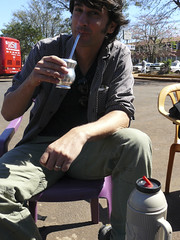 Another long standing tradition in Paraguay (and in much of South America), cutting across all socio-economic classes is that of drinking yerba mate (dried holly leaves) steeped in hot water. A bombilla or metal straw with a sieve at the bottom is used to drink the tea. When the weather is in the 90´s, than they switch to iced tea (called terere) to which they will add medicinal herbs. Paraguayans will carry their own gallon sized thermos filled, along with a cup and a metal straw, which is not only practical on a hot day, it´s also very social. Groups will share one cup and straw, refilling and passing it along to each other.
Another long standing tradition in Paraguay (and in much of South America), cutting across all socio-economic classes is that of drinking yerba mate (dried holly leaves) steeped in hot water. A bombilla or metal straw with a sieve at the bottom is used to drink the tea. When the weather is in the 90´s, than they switch to iced tea (called terere) to which they will add medicinal herbs. Paraguayans will carry their own gallon sized thermos filled, along with a cup and a metal straw, which is not only practical on a hot day, it´s also very social. Groups will share one cup and straw, refilling and passing it along to each other.
Iguacu Falls
April 8th, 2008buses and Brazil
April 8th, 2008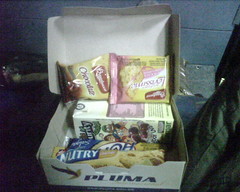 The best way to get around Brazil (and all of South America) is by bus. It’s not like taking the Grey Hound from Philly to NYC or that dreadful overnight bus in Albania, complete with chain smokers…it’s more civilized. Executivo class buses provide a snack pack, pillow and blanket for your comfort, and lido class buses include the snack pack, pillow, blanket and seats that nearly fully recline. In order to get to Foz do Iguacu, we took a 6 hour bus back to Sao Paolo, only to get on an 16 hour bus to our destination.
The best way to get around Brazil (and all of South America) is by bus. It’s not like taking the Grey Hound from Philly to NYC or that dreadful overnight bus in Albania, complete with chain smokers…it’s more civilized. Executivo class buses provide a snack pack, pillow and blanket for your comfort, and lido class buses include the snack pack, pillow, blanket and seats that nearly fully recline. In order to get to Foz do Iguacu, we took a 6 hour bus back to Sao Paolo, only to get on an 16 hour bus to our destination.
Rocinha favela
April 8th, 2008The Rocinha favela is located on the hills of Rio de Janeiro which ironically has the best views of the beautiful beaches below. Rocinha was built by refugees or former soldiers the government had no use for. Started in the late 1800’s, the government allowed public land to be used for housing, largely ignoring the poor shanty towns until it began spreading into the metropolitan areas. With an estimated 20% of Rio’s population and roughly 750 favelas surrounding Rio, the government is now taking notice.
Crime is not tolerated in the favelas. The drug lords who control the favelas are fierce about controlling any activity that might attract police presence. There is a complex network of lookout posts that make it virtually impossible for the police to enter the favela unnoticed. Rather than attend school, many of the kids prefer to work for the drug lords. The favela tour gives back to the community, donating part of the proceeds to an activity center where children go for half the day to keep them off the streets.
Rio de Janeiro
April 8th, 2008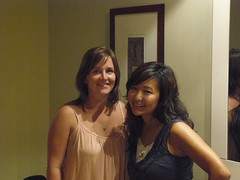 From Paraty we headed straight for Rio to meet up with Hedda (and her friend Claire) for a few days to catch up since we last saw her in July. The overcast skies didn’t keep us from doing the requisite tourist activities. We went up to Christ the Redeemer, watched a football (soccer) game, toured Rocinha favela (township), watched Brazilian volleyball on Ipanema Beach (no hands, only feet, head and chest), went to a churrascaria for all you can eat meat, and went to Lapa for dinner where Hedda almost had her wallet stolen. I’d say we did all that we could do as a tourist in Rio.
From Paraty we headed straight for Rio to meet up with Hedda (and her friend Claire) for a few days to catch up since we last saw her in July. The overcast skies didn’t keep us from doing the requisite tourist activities. We went up to Christ the Redeemer, watched a football (soccer) game, toured Rocinha favela (township), watched Brazilian volleyball on Ipanema Beach (no hands, only feet, head and chest), went to a churrascaria for all you can eat meat, and went to Lapa for dinner where Hedda almost had her wallet stolen. I’d say we did all that we could do as a tourist in Rio.
Rio’s burning
April 3rd, 2008“Hearing that soccer was the world’s most popular sport was sort of like hearing that broccoli was the world’s most popular food. You want to ask, ‘Have you tried pizza?'”
I have to agree with Chuck Klosterman on that one. We went to our first soccer game in Rio, and although there wasn’t much action on the field, there sure was plenty in the stands. Keep in mind this video was shot BEFORE the game had even started.
[youtube]http://www.youtube.com/watch?v=6I04syVqous[/youtube]
